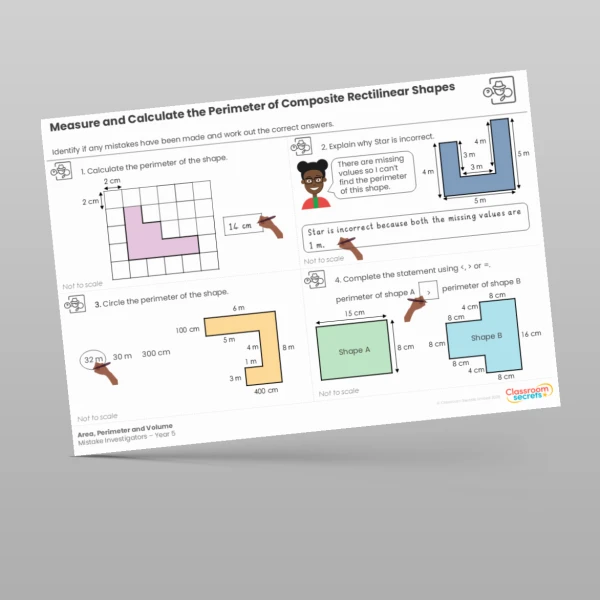

When you're looking for something that will make your classroom displays stand out, while also looking for something that will have a positive and meaningful impact on your children's learning, this Year 6 Area, Perimeter and Volume Display Pack is just the thing! Featuring a range of posters that can be used on your display, working wall, or even on tables, this resource is not to be missed! Download today to find everything below.
What's in the pack:
Area, Perimeter and Volume - Area poster
Area, Perimeter and Volume - Perimeter poster
Area, Perimeter and Volume - Volume poster
Area, Perimeter and Volume - Area - counting squares poster
Area, Perimeter and Volume - Area of a rectangle poster
Area, Perimeter and Volume - Area of a rectilinear shape poster
Area, Perimeter and Volume - Area of a rectilinear shape - unknown lengths poster
Area, Perimeter and Volume - Rectangles - same area poster
Area, Perimeter and Volume - Shapes - same area poster
Area, Perimeter and Volume - Area of a right-angled triangle - counting squares poster
Area, Perimeter and Volume - Area of a right-angled triangle - formula poster
Area, Perimeter and Volume - Area of a triangle - counting squares poster
Area, Perimeter and Volume - Area of a triangle - formula poster
Area, Perimeter and Volume - Area of a parallelogram - formula poster
Area, Perimeter and Volume - Volume of a shape - counting cubes poster
Area, Perimeter and Volume - Volume of a cube or cuboid - counting cubes poster
Area, Perimeter and Volume - Volume of a cuboid - formula poster
This resource is designed to align to White Rose Maths version 3. Classroom Secrets Limited is not affiliated with, endorsed by, or in any way connected to White Rose Education Limited. Our products are original to Classroom Secrets Limited and any reference to White Rose Maths is solely for the purpose of indicating compatibility and does not imply any association with White Rose Education.
Curriculum Objectives
- Recognise that shapes with the same areas can have different perimeters and vice versa
- Calculate the area of parallelograms and triangles
- Recognise when it is possible to use formulae for the area of shapes
- Calculate, estimate and compare volume of cubes and cuboids using standard units, including cubic centimetres (cm3) and cubic metres (m3), and extending to other units [for example, mm3 and km3]
- Recognise when it is possible to use formulae for the volume of shapes
Tags
Measurement
Spring
6M7a
6M7b
6M7c
6M8a
6M8b
Classroom Displays
Area, Perimeter and Volume











